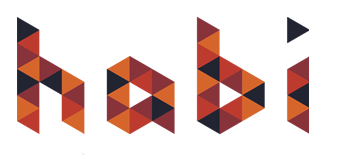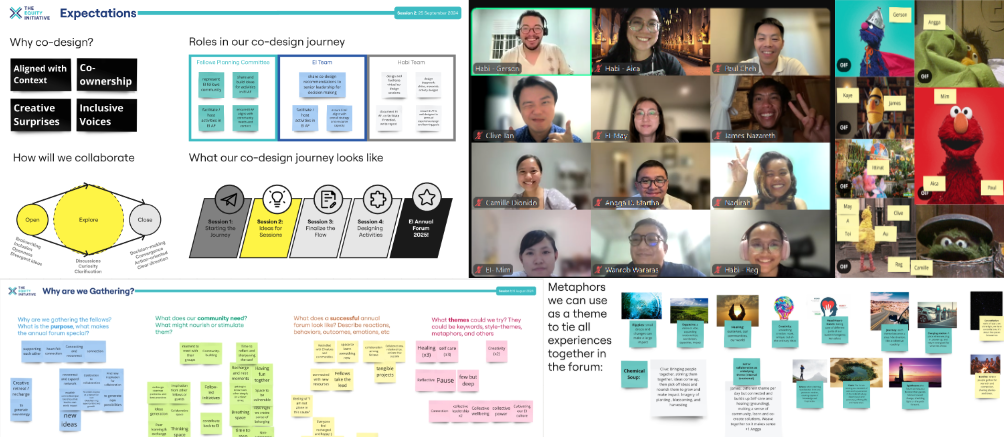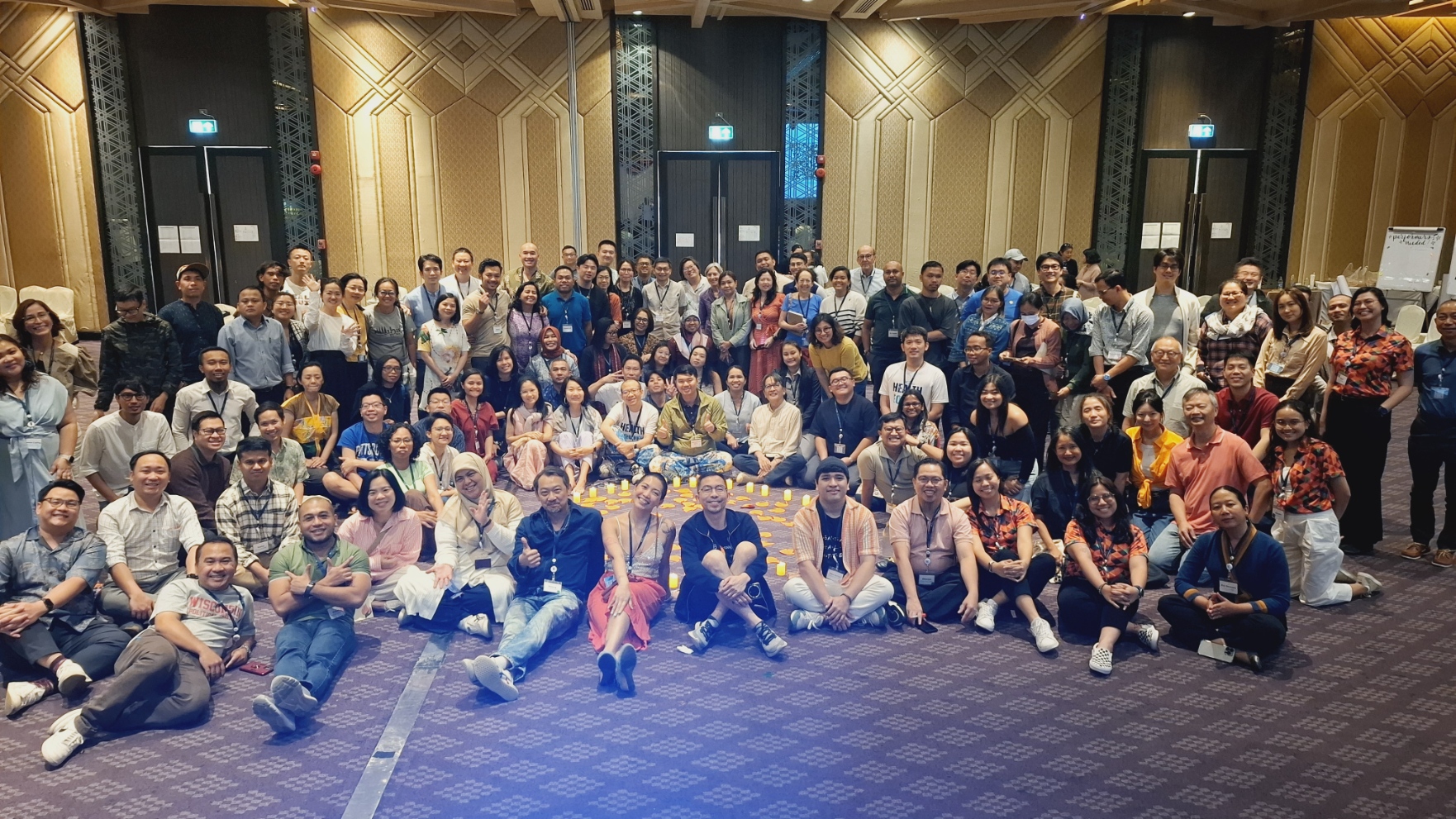By the end of the co-design sessions, we had grounded the 3-day program around the concept of a bonfire—a space where people gather to celebrate, share stories of endurance and hardship, and emerge feeling energized and ready to continue their advocacy. The warmth of the bonfire fuels them to honor and share the fire with others.
How do you effectively co-design across time zones and regions?
Maximize a Central Workspace
Good design is reflected not just in the final output but in the process and tools used. We leveraged a Miro board for brainstorming, fully utilizing its features to enable remote and asynchronous contributions.
Establish your Session Norms Together
To ensure a structured and productive process, we helped committee members understand each other's design sensibilities, allowing us to tailor the sessions to the group’s needs.
Embrace All Ideas, Build on the Best Ones based on Stakeholder context
With a 15-member committee came fifteen bright ideas. Guided by Habi’s Bukas-Daloy-Sarado framework, we welcomed all inputs, asked critical questions, assessed alignment with our vision, and collaboratively drafted early versions of the program.
Advocate for a Prototyping Mindset
Before the final design, we had two previous versions. And each time we meet, we continuously refine activities based on new parameters (e.g., participant count, contexts, hotel layout, etc.) to ensure greater impact and clarity of objectives. We saw the design process as an evolving journey, not a one-time task!
Embrace Flexibility during the Implementation Phase
Even during the forum itself, we remained flexible, working closely with session leads to refine activities based on participant energy, emerging insights, and real-time feedback.
Following the success of this program, Habi is set to design the 10th Annual Forum next year—continuing our commitment to co-designing meaningful learning experiences.


